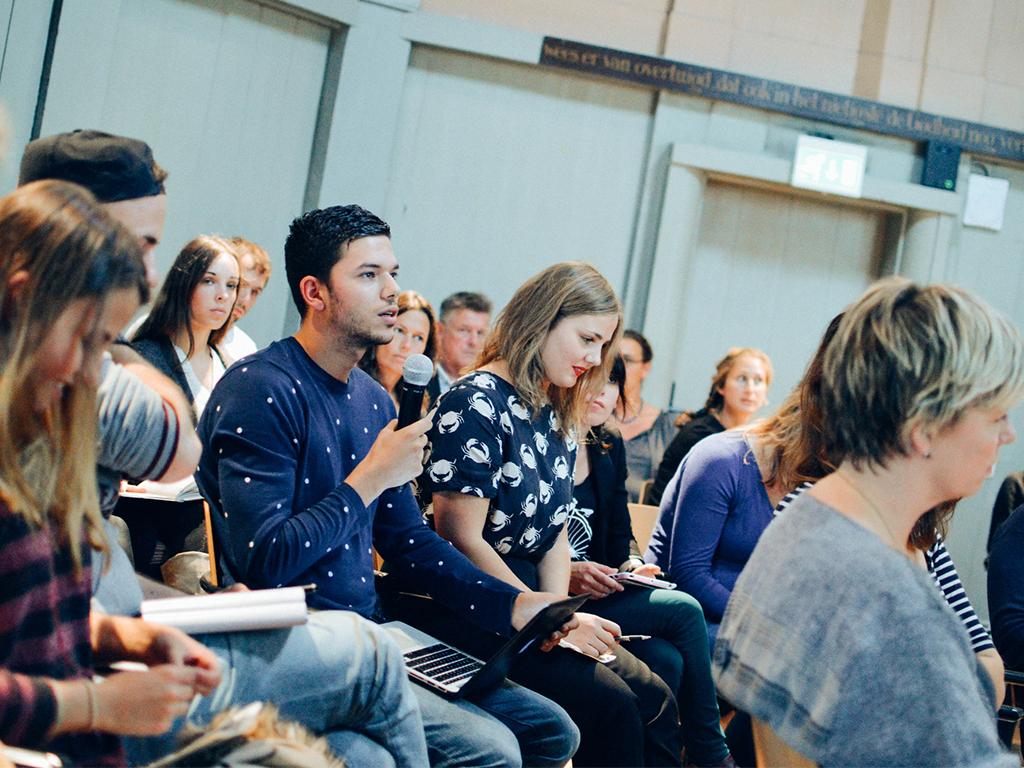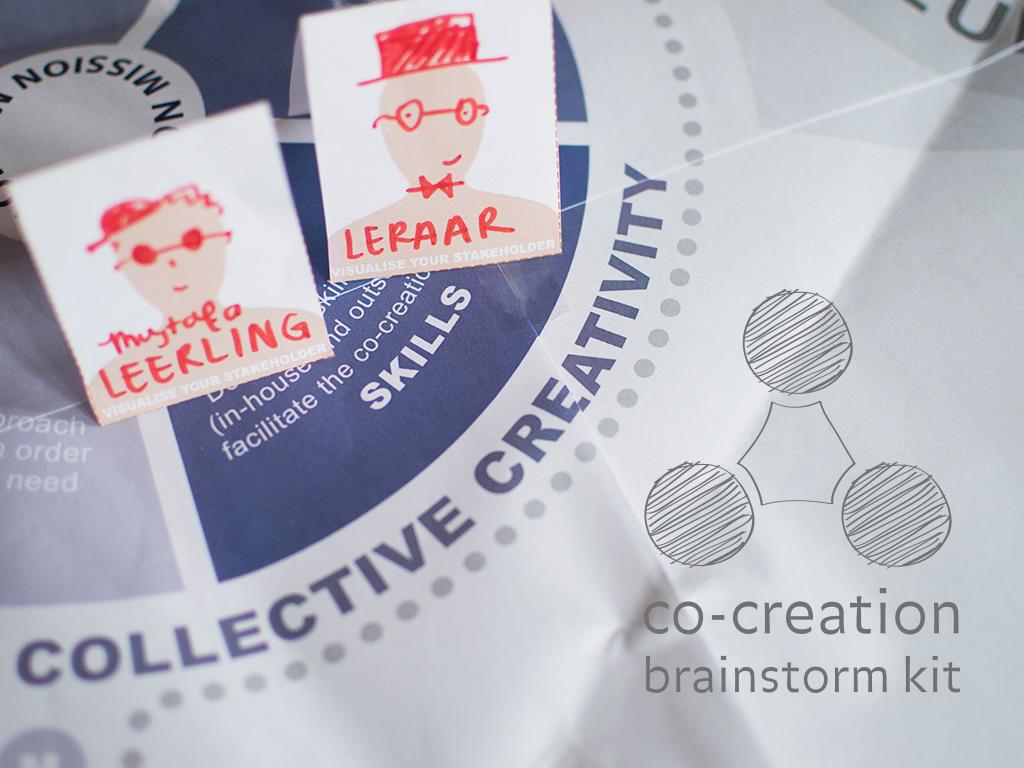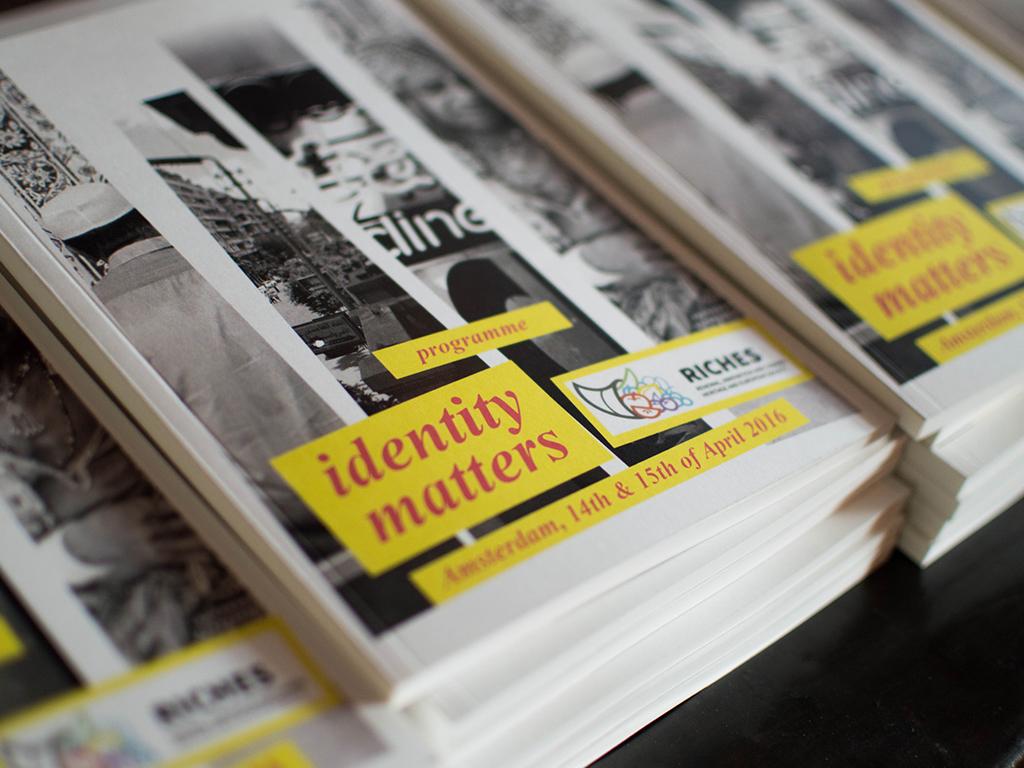On Monday, October 5th, almost 60 heritage professionals gathered in the Waag’s Anatomical Theatre. Together, we discussed how co-creation can be applied in the heritage sector to create new stories or new connections with audiences.
The session was organized as part of the EU funded RICHES research project. The main objective of RICHES is to reduce the distance between people and culture (what we call ‘recalibrating relationships’ between cultural heritage institutions and audiences). The focus of the afternoon was, therefore, on the audience and what their potential new relationships with heritage institutions might look like, and on how a co-creation approach could potentially drive this process.
But co-creation is a bit of a black box—what exactly do you do? How do you find a common language between heritage experts and new visitor groups, curators and young people, academics and people who might be less vocal? How could you use new digital technologies to enrich heritage experiences? How do you secure long-term effects of your project? These questions were central to our discussions in the expert meeting. Below, I present the most significant outcomes of the afternoon.
Heart, passion, commitment
Three heritage professionals presented inspiring co-creative projects. Merel van der Vaart talked about developing the exhibition on Daphne Oram in the Science Museum London. Lisa Kleeven spoke about her work at Foam, specifically the location they opened in Amsterdam West to engage hard-to-reach audiences. And Hodan Warsame and Simone Zeefuik discussed their project #decolonizethemuseum, which addresses post-colonial framing in museums. What did these diverse projects have in common? The commitment to bringing these projects to life. Whether it is going door to door for four years to explain to the project to people and inviting them to join (Foam), creating “homework” for over-enthusiastic participants (Science Museum), or opening up discussions about difficult subjects (like our colonial past) in #decolonizethemuseum. Working with heart, dedication, and (com)passion attracts other passionate people and allows you to change existing practices.
There is no such thing as objectivity in the museum
Every presentation, every interpretation of a collection, is by nature subjective. Scholarly contributions can help frame the collection in a more “objective” setting, but it will still be a man-made selection or story that a museum presents. Janine Huizenga, designer, points out the value of acknowledging this simple fact. It can help museums be more open to new voices and insights from outside the museum. In co-creation it starts with empathy, and learning to listen to other perspectives. You can try to be inclusive, but maybe it is more important to be non-exclusionary.
Who is the expert?
Engaging in a co-creation project can be quite scary because it means museum professionals have to cede part of their authority, says Wayne Modest of the Research Center for Material Culture. Inviting new people to contribute ideas, designs, and stories (although they are not experts in heritage practice) can seem like professional expertise loses value. Janine Huizenga emphasizes that her expertise then lies in guiding the process and helping the participants reach a different kind of dialogue. Hannah Fox, from the Derby Silk Mill, sees expertise primarily as a personal frame in which people (heritage professionals and participants alike) place themselves. She does note, however, that participants can’t be responsible for the end result. When large amounts of funding are dedicated to a project, it's important to define responsibilities and value professional expertise where appropriate.
Shared ‘meaning making’
A heritage collection becomes valuable when people connect meaning to it. Peter Gorgels of the Rijksmuseum explains how the Rijksstudio allows website visitors to appropriate and modify images from the collection as they please, so they may connect to it on a personal level. Yet, these digital appropriations will not find their way into exhibitions (where museum curators remain in charge). Danielle Kuijten builds modern day collections from scratch with Imagine IC, an organization that works with communities to define their shared, contemporary heritage. These stories and images are collected, presented, and archived just like any other museum collection. A group of participants created new heritage and new meaning, and then shared this with a large audience. In light of new digital making practices, Theo Meereboer is exploring the idea of a maker museum that would deal with industrial heritage and connect it to our industrial future.
We feel experts at our meeting gave a beautiful overview of important, co-creation values, and the various pitfalls encountered while trying to uphold these values. Within RICHES, we plan to use these insights in the co-creation website we’re building, which aims to provide heritage professionals with inspiration about how to implement this in their own work. So, more info and inspiration coming soon!


